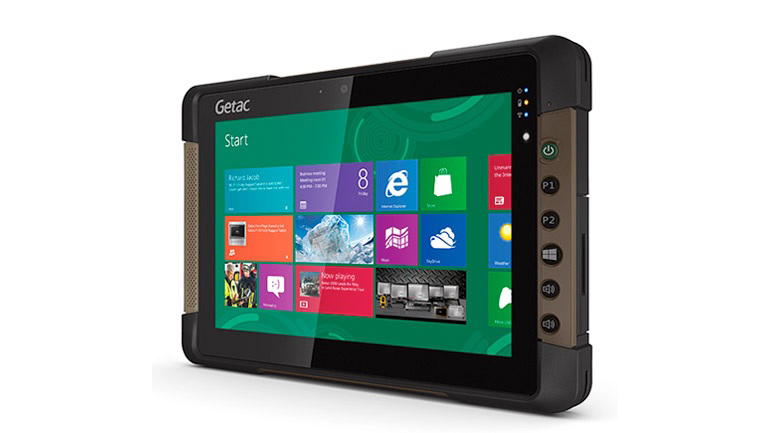'ZDNET Recommends': What exactly does it mean?
ZDNET's recommendations are based on many hours of testing, research, and comparison shopping. We gather data from the best available sources, including vendor and retailer listings as well as other relevant and independent reviews sites. And we pore over customer reviews to find out what matters to real people who already own and use the products and services we’re assessing.
When you click through from our site to a retailer and buy a product or service, we may earn affiliate commissions. This helps support our work, but does not affect what we cover or how, and it does not affect the price you pay. Neither ZDNET nor the author are compensated for these independent reviews. Indeed, we follow strict guidelines that ensure our editorial content is never influenced by advertisers.
ZDNET's editorial team writes on behalf of you, our reader. Our goal is to deliver the most accurate information and the most knowledgeable advice possible in order to help you make smarter buying decisions on tech gear and a wide array of products and services. Our editors thoroughly review and fact-check every article to ensure that our content meets the highest standards. If we have made an error or published misleading information, we will correct or clarify the article. If you see inaccuracies in our content, please report the mistake via this form.
Getac T800 review: A fully rugged 8.1-inch Windows tablet


Getac T800
pros and cons
- Fully rugged (MIL-STD 810G, IP65)
- Hot-swappable primary battery
- Snap-on second battery option
- 4G LTE support
- Ethernet and USB 3.0 ports
- Bulky and heavy for an 8-inch tablet
- Micro-SD card support optional rather than standard
- SSD storage maxes out at 128GB
- Editors' review
- Specs
There aren't too many fully rugged Windows 8.1 tablets available, and for that reason alone the Getac T800 is interesting. It adds a smaller 8.1-inch device to the company's Windows tablet range, which until now has been based on the 11.6-inch F110. Getac's reputation for producing military-grade rugged notebooks and tablets means the T800, which includes GPS and 4G LTE support should be able to survive the harshest of field conditions.
The Getac T800 costs from £1,099 (ex. VAT), or £1,399 (ex. VAT) as reviewed.
The inevitable trade-off with any fully rugged device is its extra bulk and weight compared to a mainstream device with a similar screen size. Sure enough, despite Getac's 'thin and light' description, the T800 is heavy for an 8.1-inch tablet at 880g. Consider, for example Lenovo's 8.3-inch ThinkPad Tablet 8, which at 439g is almost exactly half the Getac T800's weight.
Nor is the T800 thin at 24mm -- that's 2.7 times the thickness of the 8.8mm ThinkPad Tablet 8, for example.
The other side of the weight/bulk coin is durability, of course, and the T800 duly meets the MIL-STD 810G and IP65 standards. The latter's '6' rating means the tested device is completely 'dust tight', while the '5' rating signifies that it can withstand water jets from a 6.3mm nozzle. The MIL-STD test is a tougher affair that tests across a range of criteria including temperature, vibration, shock, sand, dust, and even fungus ingress. The T800 is, for example, certified to survive temperatures ranging between -21°C to 50°C (-5.8°F to 122°F).
The T800's chassis includes rubber bumpers on the four corners and protection for the ports and connectors.
Top ZDNET Reviews
On the bottom edge there's a pass-though connector for using an external GPS, WLAN or WWAN antenna, plus a docking connector. These are the only unprotected ports. Next to these is the power imput, which is protected by a rubber seal when not in use.
On the right side a rigid flap has to be released then swivelled to reveal a micro-HDMI connector, a full-size USB 3.0 port and a headset jack. The left edge is free of connectors, but does incorporate a storage slot for the stylus that you can use with the touchscreen. This fits securely and is tethered to the body of the tablet.
The top edge of our review sample had a barcode reader, but you can opt instead to have a serial port, a micro-SD card slot or an Ethernet port. At the back there's a removable panel under which you can insert a SIM card to enable 4G LTE connectivity.
You can also remove the battery which is held in place by three sliding locks and takes up three-quarters of the back of the tablet. This battery will keep the T800 going for up to eight hours; a second battery can be fitted courtesy of Getac's tool-free 'SnapBack' system, adding a further eight hours of life and bringing the total to 16 hours.
Each battery, including the SnapBack second battery, has a touch-responsive LED strip on its inside which indicates the percentage charge remaining. You can even replace the primary battery without powering down if you're quick about it. It's all very efficient, and our only slight concern is that the primary battery gets fairly warm while charging and is even a little warm when the T800 is idling.
The SnapBack system also includes an RFID/smartcard reader combo, but you can only use one of these accessories at a time.
Although the 8.1-inch screen has a relatively low 1,280-by-800-pixel resolution, it's designed specifically for outdoor legibility thanks to Getac's single-panel LumiBond system, which delivers enhanced contrast and crisper colours, according to the company.
The screen's matte finish makes it easily readable indoors too. A screen protector is provided (and prefitted) as standard, so you can be confident of scratch resistance from day one. Getac doesn't say that the screen is Gorilla Glass, but we presume that's the case.
Our review sample had an optional 5-megapixel webcam above the screen, with a series of status LEDs and buttons on the right-hand side. The buttons comprise the main power button, two user-programmable buttons, the Windows button, and volume up/down. One of the user-configurable buttons by default opens a desktop control panel where you can change settings such as brightness, screen orientation, battery mode and Bluetooth status.
The Getac T800 is powered by a 2.16GHz-2.58GHz quad-core Intel Pentium N3530 processor with 4GB of DDR3 RAM and, on our review sample, a 128GB SSD (64GB is also available). We only had 83GB free on our 128GB unit; if more storage is required, you'll have to access it via the USB 3.0 port, the micro-SD card slot (if fitted) or use the mobile broadband connection to access a network- or cloud-based service.
The Getac T800's Windows Experience Index (WEI) scores (out of 9.9) are headed by the 128GB SSD (Primary hard disk score of 7.8) and propped up by the integrated graphics scores of 4.2 and 4.3:
Processor 6.5
Memory (RAM) 5.9
Graphics 4.3
Gaming graphics 4.2
Primary hard disk 7.8
Although it's a distinctly moderate performer, the T800 has enough horsepower to process the workloads likely to be required of it.
Conclusion
Designed for vertical markets where rugged features are essential, the Getac T800 is a solid 8.1-inch tablet. It's small enough to sit on a vehicle dashboard, has an outdoor-readable screen and should easily survive knocks and drops, while the ability to swap batteries without powering down, as well as to add a second snap-on battery, will appeal to field workers.
However, we'd have liked micro-SD storage as a standard, and perhaps a 512GB SSD option too.